A bathroom is one of the most frequently used rooms in the home, so it’s no surprise that it requires regular, deep cleaning process and maintenance. While routine cleaning can keep things tidy, a deep clean goes beyond the surface, tackling hidden germs, grime, and buildup that can accumulate over time. In this guide, we’ll walk you through the essential steps and provide tips for a thorough, effective bathroom deep cleaning.
Why Is Bathroom Deep Cleaning Important?
Over time, dirt, soap scum, mold, mildew, hard water stains, and bacteria can accumulate in areas that are difficult to clean with everyday methods. Regular bathroom cleaning is essential for maintaining hygiene and eliminating germs, ensuring that your bathroom remains fresh-smelling and safe for you and your family. These microorganisms thrive in warm, moist environments, making the bathroom a breeding ground for germs. Mold and mildew can cause respiratory issues and other health problems, emphasizing the need for thorough cleaning. It also helps to maintain the longevity of bathroom fixtures, ceramic shower tiles, and surfaces by preventing the buildup of damaging grime and mineral deposits, such as in grout lines.
The Risks of Poor Bathroom Hygiene
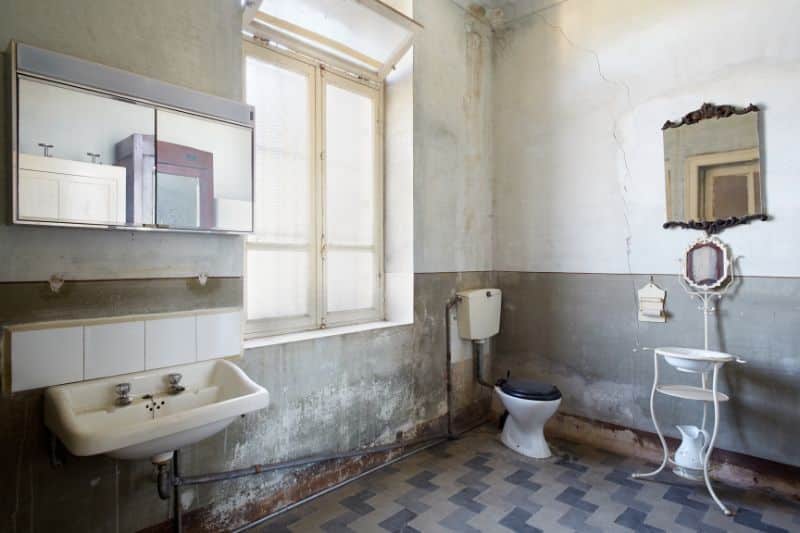
Poor bathroom hygiene can lead to the growth of harmful bacteria, viruses, and fungi, which can cause a range of health problems. These microorganisms thrive in warm, moist environments, making the bathroom a breeding ground for germs. If not cleaned regularly, the bathroom can become a haven for disease-causing pathogens, putting you and your family at risk of illness.
Some of the risks associated with poor bathroom hygiene include:
- The Spread of Infectious Diseases: Bathrooms can harbor viruses like influenza and norovirus, which can easily spread through contact with contaminated surfaces.
- Growth of Mold and Mildew: Mold and mildew thrive in damp conditions and can exacerbate respiratory problems such as asthma and allergies. Using a bathroom exhaust fan is crucial to reduce moisture and prevent mold growth.
- Skin Infections: Bacteria and fungi in the bathroom can lead to skin infections like acne and folliculitis.
- Unpleasant Odors and Stains: Poor hygiene can result in persistent odors and unsightly stains, which can be embarrassing and affect your self-esteem.
Regular deep cleaning of the bathroom can help mitigate these risks and create a healthier environment for you and your family.
Why Regular Cleaning of a Bathroom is Not Enough
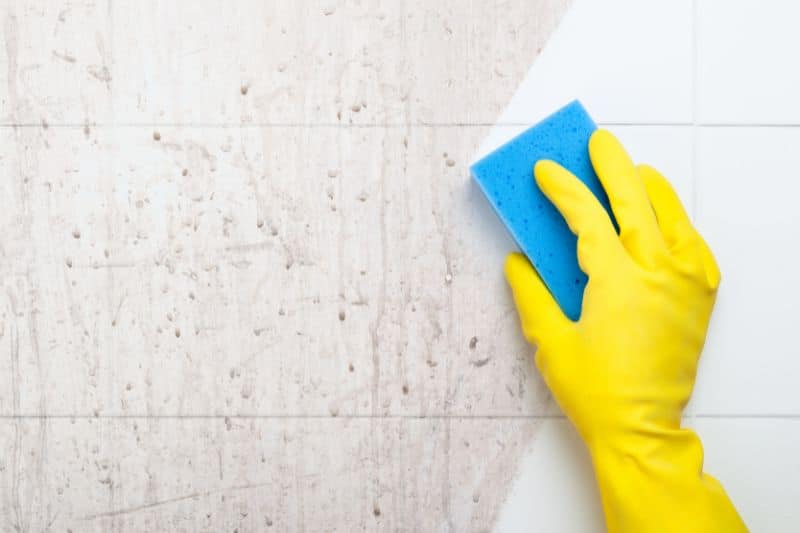
While regular cleaning is essential for maintaining a clean and hygienic bathroom, it often falls short in tackling stubborn stains, soap scum, and mineral deposits that accumulate over time. These tough residues can cling to surfaces, making them difficult to remove with everyday cleaning methods. Deep cleaning is necessary to address these persistent issues, ensuring a sparkling clean bathroom that is free from bacteria and germs.
Regular cleaning may also miss hidden areas of the bathroom, such as grout lines, the showerhead, and the toilet tank, which can harbor bacteria and mold. These areas require special attention during a deep clean to ensure a thorough and effective clean. By incorporating deep cleaning into your routine, you can reach these often-overlooked spots and maintain a truly hygienic bathroom environment.
Benefits of Deep Cleaning a Bathroom
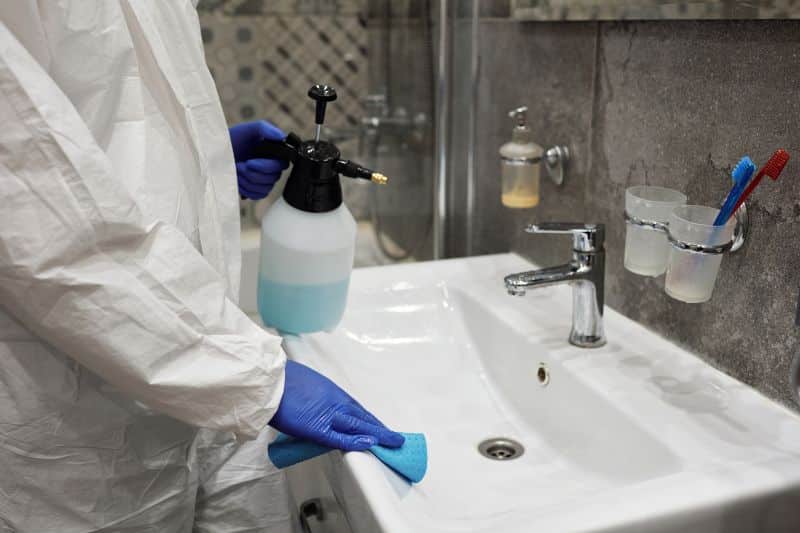
Deep cleaning the bathroom offers numerous benefits, including:
- Improved Hygiene: Regular deep cleaning reduces the risk of illness by eliminating harmful bacteria, viruses, and fungi.
- Pleasant Environment: A clean bathroom is free from unpleasant odors and stains, making it a more enjoyable space.
- Sense of Pride: Maintaining a clean bathroom can give you a sense of pride and satisfaction with your home.
- Extended Lifespan of Fixtures: Deep cleaning helps preserve the condition of bathroom fixtures like the shower head and toilet seat, extending their lifespan.
- Eco-Friendly: By reducing the need for harsh chemicals, deep cleaning can be more environmentally friendly and safer for your health.
Incorporating deep cleaning into your bathroom cleaning routine ensures a cleaner, healthier, and more pleasant bathroom experience.
How Often Should You Deep Clean the Bathroom?
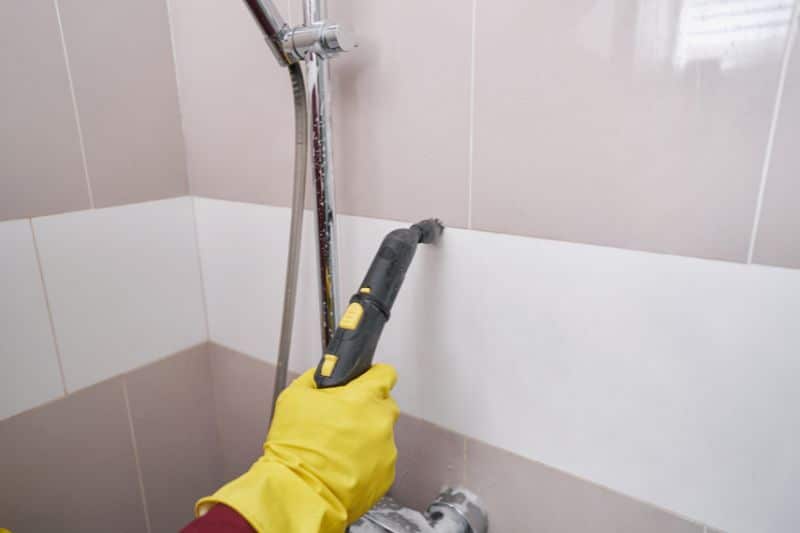
Deep cleaning your bathroom is crucial for maintaining a hygienic and pleasant environment. The frequency of deep cleaning depends on several factors, including the number of people using the shower floor or to clean a bathroom, and the level of usage. Here’s a general guideline to help you determine how often to deep clean your bathroom:
- Living Alone: If you live alone, a deep clean every 2-3 months should suffice. With fewer people using the space, grime and bacteria accumulate more slowly.
- Small Family: For a small family, aim to deep clean your bathroom every 1-2 months. More frequent use means more frequent cleaning is necessary to keep the space sanitary.
- Large Family or Busy Household: In a large family or busy household, deep cleaning every 1-2 weeks is recommended. High traffic means more dirt, soap scum, and bacteria build-up, requiring more regular attention.
Additionally, it’s essential to deep clean your bathroom after any illness or infection to prevent the spread of germs and bacteria. Regular deep cleaning ensures a healthier bathroom cleaner environment for everyone.
Using a bathroom exhaust fan regularly is also important to maintain a hygienic environment and reduce the need for frequent deep cleaning.
What You’ll Need for Bathroom Deep Cleaning
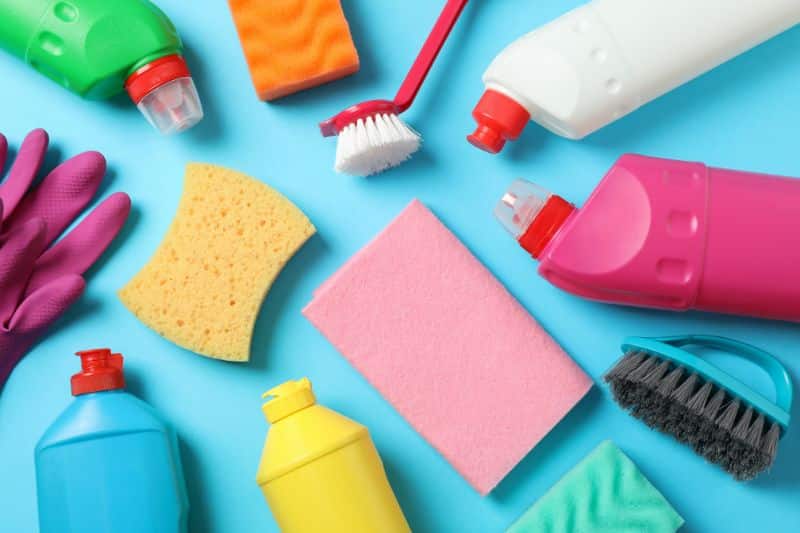
Before you begin, gather the necessary cleaning supplies to make the process efficient:
- All-purpose cleaner or a disinfectant
- Glass cleaner for mirrors and windows
- Tile cleaner (or a homemade vinegar-water solution)
- Scrub brushes (for grout and corners)
- Grout cleaner
- Microfiber cloths or sponges
- Baking soda (great for tackling stains and odors)
- Toilet bowl cleaner and a toilet brush
- Old toothbrush (for small, hard-to-reach areas)
- Rubber gloves (to protect your hands)
- Bucket of warm water with a few drops of dish soap
- Steam cleaner (optional, for deep sanitizing)
- Vacuum cleaner with a brush attachment (optional, for cleaning exhaust fans and radiators)
Best Bathroom Cleaning Supplies
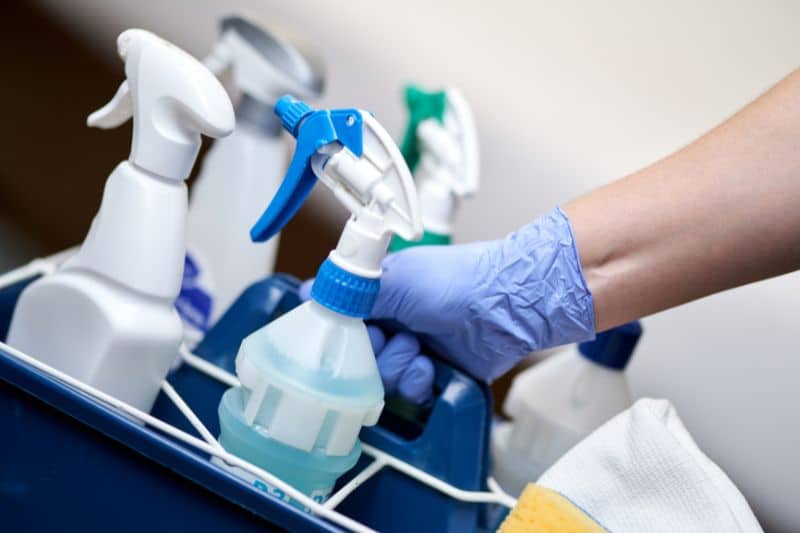
When it comes to deep cleaning your bathroom, having the right cleaning supplies is crucial. Here are some of the best bathroom cleaning supplies that you should consider:
- All-purpose cleaners: Effective against a wide range of bacteria and viruses, these cleaners can be used on various surfaces, including tile, glass, and countertops.
- Glass cleaners: Specifically designed to clean glass surfaces, such as shower doors and mirrors, leaving them streak-free and sparkling clean.
- Disinfecting wipes: Ideal for high-touch areas like doorknobs, light switches, and toilet handles, these wipes are effective against bacteria and viruses.
- Scouring powder: Great for tackling tough stains and soap scum, this powder can be used on shower walls and floors.
- Toilet bowl cleaner: Specifically formulated to clean the toilet bowl and remove stubborn stains and mineral deposits.
- Shower and tub cleaner: Effective against soap scum and mildew, this cleaner can be used on shower walls and floors.
- Grout cleaner: Designed to clean grout lines and remove dirt and grime.
- Microfiber cloths: Excellent for picking up dirt and grime, these cloths can be used on various surfaces, including tile, glass, and countertops.
- Sponges: Versatile and effective at cleaning surfaces, sponges can be used on tile, glass, and countertops.
- Mop and bucket: Essential for cleaning bathroom floors, these can be used on various surfaces, including tile, wood, and laminate.
Having these supplies on hand will make your deep cleaning efforts more efficient and effective, ensuring a thoroughly clean bathroom.
Step-by-Step Guide to Deep Clean Your Bathroom
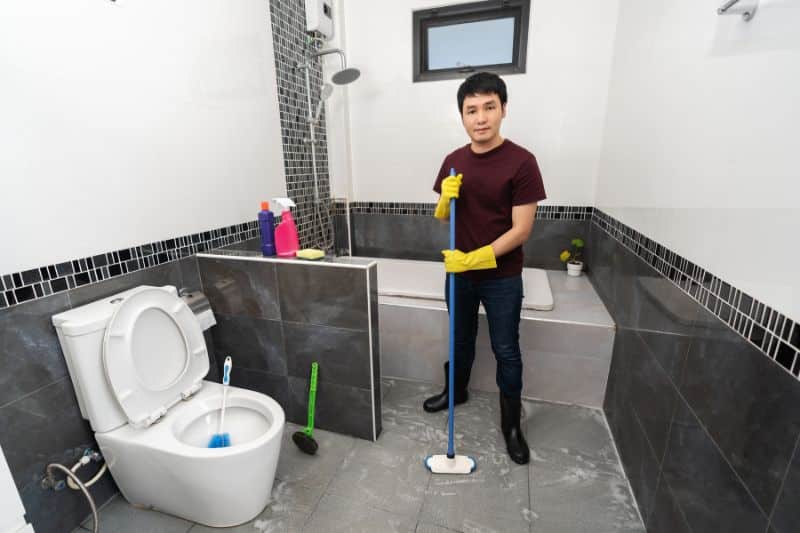
1. Declutter and Organize
Start by clearing the bathroom mirrors take out any personal items, toiletries, rugs bath mats, or towels. This not only gives you better access to the bathroom cleaner and surfaces but also helps you identify areas that need extra attention. Sort through any products, throwing away expired or empty items.
2. Dust and Sweep
Dust light fixtures, vents, and exhaust fans. It’s important to clean the bathroom exhaust fan to remove dust and improve air quality. Use a microfiber cloth to wipe down ceiling corners, chrome fixtures, and light switches. After that, sweep the floor to remove dust, hair, and debris. Sweeping first prevents dirt from mixing with hot soapy water being used during the mopping stage.
3. Clean Mirrors and Glass
Spray a glass cleaner or vinegar-water solution on mirrors and glass shower doors, then wipe down with a microfiber cloth for streak-free shine. For tough water spots on the glass shower doors and other shower tiles, a mixture of equal parts vinegar and water can help break down mineral deposits.
4. Scrub Shower/Tub
Next, focus on the tub or the shower head. Cleaning the shower curtains, shower head, and shower tiles is also essential to eliminate germs, soap scum, and mildew. Spray your preferred tile or bathroom cleaner on the walls and floor of the the shower head. Make sure to thoroughly clean the shower head and tiles to remove soap scum and grime. Let it sit for 5-10 minutes to break down soap scum and grime. Use a scrub brush or sponge to tackle the grout lines and corners, where buildup often accumulates. For stubborn stains, a paste of baking soda and water can work wonders. Don’t forget to clean the showerhead by soaking it in a vinegar solution for 15-20 minutes, then wipe away any buildup.
5. Tackle the Toilet and Toilet Seat
The toilet and toilet seat are two of the most critical areas to focus on when deep cleaning the bathroom. Here’s how to tackle these areas:
- Remove Debris: Start by removing any visible debris from the toilet bowl. Apply a toilet cleaner and let it sit for a few minutes to break down stains and bacteria.
- Clean the Toilet Seat: Use a disinfecting wipe or spray to thoroughly clean the toilet seat, lid, and handle. Pay particular attention to the areas around the hinges and bolts, where grime can accumulate.
- Wipe Down the Exterior: Use a microfiber cloth to wipe down the outside of the toilet, including the base and behind the tank. This helps remove dust and bacteria.
- Scrub the Bowl: Use a toilet brush to scrub the inside of the toilet bowl, focusing on the areas under the rim and around the drain. This ensures a thorough clean and helps prevent mineral buildup.
By following these steps, you can ensure that your toilet and toilet seat are hygienic and free from harmful bacteria.
5. **Tackle the Toilet and Toilet Seat**
The toilet can be a breeding ground for bacteria, so give it special attention. Start by applying toilet cleaner inside the toilet bowl, ensuring you cover the sides and under the rim. Use a toilet brush to scrub the interior, paying special attention to mineral deposits or stains. Wipe down the outside of the toilet with an all-purpose cleaner, paying close attention to the flush handle and other high-touch areas. Use a microfiber cloth to wipe the tank, seat, and lid. The toilet tank and seat, being a high-touch area, requires thorough cleaning and regular disinfection to prevent bacterial buildup.
6. Clean Sink and Countertops
Apply an all-purpose cleaner to the top clean a bathroom, sink and countertops, as the top clean a bathroom sink often has a high bacteria count, even more than the toilet seat. Use a sponge to scrub away soap scum, toothpaste stains, and water spots. For tough stains, baking soda is your best friend. Gently scrub areas that have become discolored or have built up grime make-up residue. Don’t forget to clean the faucet, handles, and mirror. Once everything is clean, wipe down with a dry microfiber cloth for a streak-free finish.
7. Deep Clean Grout and Tile
Grout lines are often overlooked during regular cleaning, but they can easily harbor mold, mildew, and dirt. Use a grout cleaner or create a paste with baking soda and hot water together. Apply it to grout lines and scrub with an old toothbrush. For extra deep cleaning, you can use a steam cleaner, which helps lift grime from grout without harsh chemicals. To ensure a deeper clean, consider performing this task monthly or every few months for thoroughness.
8. Mop the Floors
Once all surfaces of bathroom floor have been cleaned, it’s time to mop the floor. Use a gentle floor cleaner and warm water in a bucket. Mop the entire floor, paying attention to corners and edges where dirt can accumulate. For extra cleanliness, you can also just disinfecting spray the floor with a diluted bleach solution.
9. Sanitize High-Touch Areas
Wipe down doorknobs bathroom mirrors shower doors, light switches, door knobs and any other high-touch areas with a disinfecting wipe or cleaner. The bathroom sink is another high-touch area that can harbor germs and bacteria, making it important to sanitize. These areas tend to harbor germs and bacteria, so it’s essential to sanitize quick wipe them thoroughly during a deep cleaning.
10. Finishing Touches
Replace any old towels, washcloths, or bathmats with fresh ones. Refill soap dispensers, place clean toilet and paper towel rolls in soap dispensers, and restock any personal items you use in the bathroom. This gives the space a polished and inviting feel. Lastly, open a window or turn on the exhaust fan to let fresh air circulate and eliminate any lingering cleaning odors.
Disinfect Where Necessary
Disinfecting is a critical part of deep cleaning your bathroom. Here are some areas that you should focus on:
- Toilet handle: A high-touch area that can harbor bacteria and viruses.
- Sink faucet: Another high-touch area prone to bacteria and viruses.
- Showerhead: Can harbor bacteria and mold, which can be spread through the water.
- Toilet seat: A high-touch area that can harbor bacteria and viruses.
- Bathroom trash can: Can harbor bacteria and viruses, which can be spread through the air.
When disinfecting, use a disinfecting spray or wipes and follow the instructions on the label. Wear gloves and ensure proper ventilation to prevent the spread of bacteria and viruses. By focusing on these high-touch areas, you can significantly reduce the risk of illness and maintain a hygienic bathroom.
Deep Cleaning the Bathroom Taps
Bathroom taps can quickly become a hotspot for grime, mineral deposits clean dirt, and bacteria. Here’s a step-by-step guide to deep clean your bathroom taps and keep them sparkling:
- Remove Debris: Start by wiping away any visible debris or dirt from the taps using a soft cloth or brush.
- Prepare Cleaning Solution: Mix equal parts water and white vinegar in a bowl. This natural solution is excellent for breaking down mineral deposits.
- Soak the Taps: Soak a soft cloth in the vinegar solution and wrap it around the taps. Let it sit for 30 minutes to an hour to allow the solution to penetrate and loosen any buildup.
- Scrub Away Grime: Use a soft-bristled brush to scrub away any remaining dirt or grime. Pay special attention to crevices and hard-to-reach areas.
- Rinse Thoroughly: Rinse the taps thoroughly with warm water to remove any remaining solution and debris.
- Dry the Taps: Finally, dry the taps with a soft cloth to prevent water spots and give them a polished finish.
Regularly deep cleaning your bathroom taps not only keeps them looking great but also ensures they remain free from harmful bacteria and mineral buildup. Additionally, it’s important to regularly clean the bathroom sink to prevent the buildup of grime and bacteria.
Deep Cleaning the Bathroom Vent and Exhaust Fan
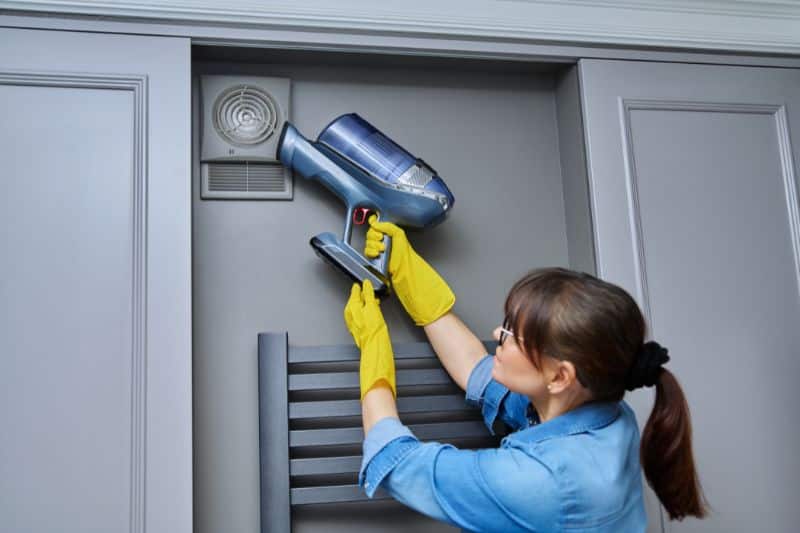
The bathroom vent and bathroom exhaust fan are often overlooked when it comes to cleaning, but they play a crucial role in removing moisture and odors from the bathroom. Here’s how to deep clean these areas:
- Turn Off the Power: Start by turning off the power to the exhaust fan at the circuit breaker to ensure safety.
- Remove the Cover: Carefully remove the cover of the exhaust fan. Use a vacuum cleaner with a brush attachment to remove dust and debris from the fan blades and motor.
- Wipe Down the Fan: Use a damp cloth to wipe down the fan blades and motor, removing any remaining dust or grime.
- Clean the Cover: Use a disinfecting wipe or spray to clean the exhaust fan cover and any other surfaces that may be harboring bacteria or mold.
- Reattach the Cover: Once everything is clean, reattach the cover and turn the power back on.
Regularly deep cleaning your bathroom vent and exhaust fan helps maintain good air quality and prevents moisture buildup, reducing the risk of mold and mildew.
How to Clean the Bathroom Vent
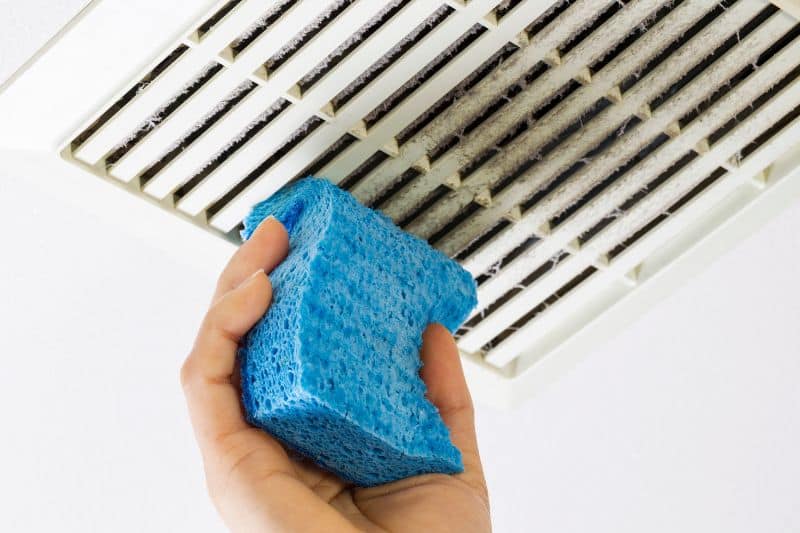
Cleaning the whole bathroom sink, bathroom exhaust fan, and vent is an essential part of maintaining good bathroom hygiene. Here’s how to do it:
- Remove Debris: Start by removing any visible debris from the vent cover. Use a vacuum cleaner to clean the vent itself, removing dust and dirt.
- Wipe Down the Cover: Use a damp cloth to wipe down the vent cover and any other surfaces that may be harboring bacteria or mold.
- Disinfect: Use a disinfecting wipe or spray to thoroughly clean the vent cover and any other surfaces that may be harboring bacteria or mold.
- Reattach the Cover: Once everything is clean, reattach the vent cover and ensure it is securely in place.
By following these steps, you can keep your bathroom vent clean and functioning properly, reducing the risk of moisture and odor buildup in the bathroom.
Tips for Maintaining a Clean Bathroom
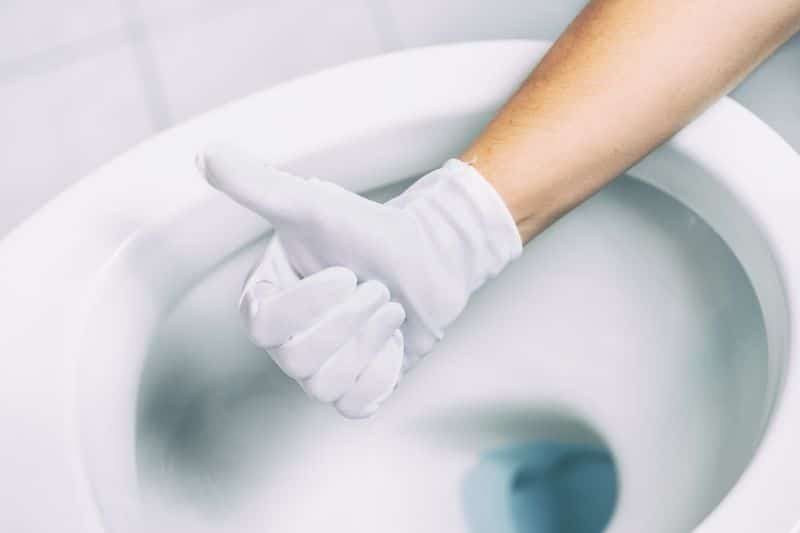
Now that you’ve deep cleaned your bathroom, maintaining it is the key to avoiding another major cleaning session. Here are a few tips for upkeep:
- Wipe surfaces regularly: A quick daily or weekly wipe-down of your sink, faucet, and countertop can keep grime from building up.
- Use a shower squeegee: After each shower, use a squeegee to remove water from the glass and tiles, which can prevent soap scum and water stains.
- Ventilate the bathroom: Keep the space dry and free of excess humidity by using an exhaust fan or opening a window. This will help prevent mold and mildew growth.
- Use a bathroom exhaust fan: It’s important to use a bathroom exhaust fan to keep the space dry and prevent mold and mildew growth.
- Check for leaks: Regularly inspect the plumbing fixtures for any leaks, as standing water can lead to mildew or mold buildup.
- Maintain your shower curtain: Regularly clean your shower curtain and liner to avoid the buildup of germs, soap scum, and mildew. Consider washing plastic shower curtains and liners in the washing machine with towels to aid in cleaning.
Common Mistakes to Avoid when Deep Cleaning a Bathroom
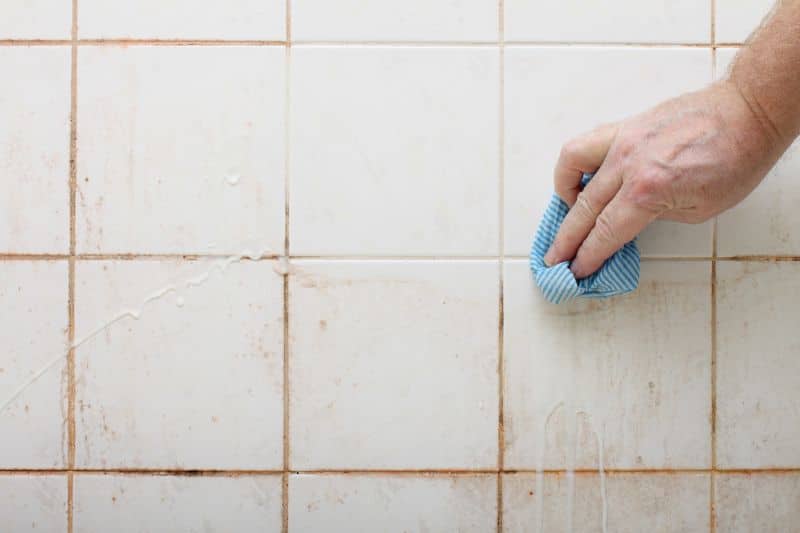
When deep cleaning your bathroom, avoiding common mistakes can make the process more effective and safe. Here are some pitfalls to watch out for:
- Using Abrasive Cleaners: Abrasive cleaners or scrubbers can damage surfaces, especially delicate ones like glass shower doors and tiles. Opt for gentle bathroom cleaners and soft cloths instead.
- Not Wearing Gloves: Always wear rubber gloves to protect your hands from harsh chemicals and cleaning solutions.
- Poor Ventilation: Ensure proper ventilation by opening windows or using an exhaust fan. This helps to dissipate fumes from cleaning products and prevents mold growth.
- Not Using a Bathroom Exhaust Fan: Using a bathroom exhaust fan is crucial to ensure proper ventilation and prevent mold growth.
- Cleaning Bottom to Top: Clean from top to bottom to avoid spreading dirt and grime onto already cleaned areas. Start with high surfaces like mirrors and shower walls, then move to the bathroom floor.
- Neglecting High-Touch Areas: Don’t forget to disinfect high-touch areas such as doorknobs, light switches, and faucet handles. These spots can harbor a lot of germs.
By steering clear of these common bathroom cleaner mistakes, you can achieve a more thorough and effective deep clean of your bathroom.
Deep Cleaning on a Budget
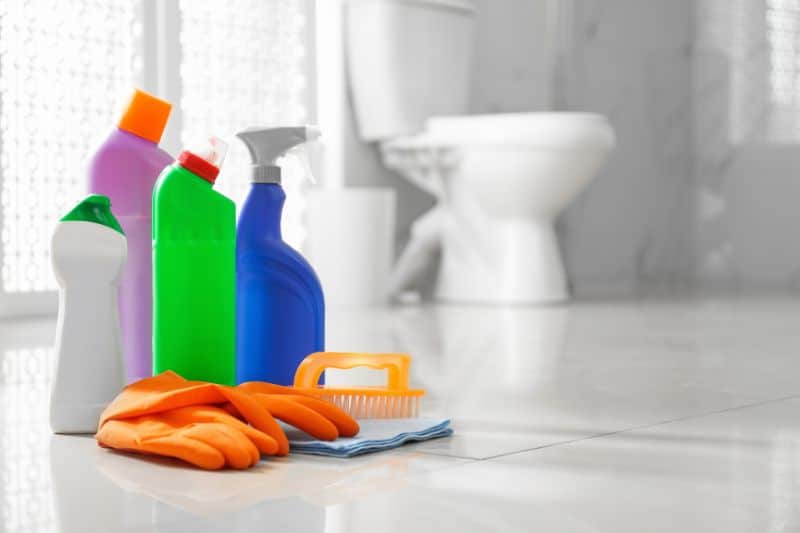
Deep cleaning your bathroom doesn’t have to be expensive. Here are some budget-friendly tips to help you achieve a sparkling clean bathroom without breaking the bank:
- Natural Cleaning Products: Use natural products like baking soda and vinegar, which are both inexpensive and highly effective. Baking soda is great for scrubbing away stains, while vinegar can dissolve mineral deposits and soap scum.
- DIY Cleaning Solutions: Make your own cleaning solutions using household ingredients. For example, a mixture of vinegar and water can serve as an excellent glass cleaner.
- Microfiber Cloths: Invest in microfiber cloths, which are reusable and can be washed multiple times. They are great for cleaning various surfaces without leaving streaks.
- Bulk Purchases: Buy cleaning supplies in bulk to save money in the long run. Look for sales or discounts to stock up on essentials like toilet cleaner and dish soap.
- Coupons and Discounts: Use coupons or look for discounts when purchasing cleaning supplies. Many stores offer deals that can help you save on your cleaning budget.
- Bathroom Sink Cleaning: Use baking soda and vinegar to clean the bathroom sink. This method is both inexpensive and effective for removing grime and keeping your sink sparkling clean.
By following these tips, you can deep clean your bathroom effectively and affordably, ensuring a fresh and hygienic space without overspending.
Final Thoughts
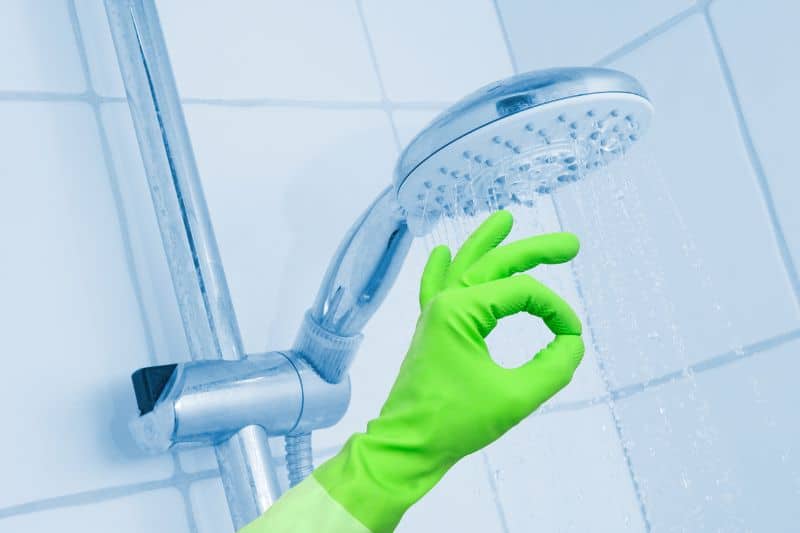
When hiring professionals for deep cleaning a bathroom, it’s important to find a reliable and experienced service to ensure that all areas are thoroughly cleaned, sanitized, and maintained. Deep cleaning your bathroom may take some effort, but the results are worth it! A clean and sanitized bathroom not only looks better but also contributes to a healthier home environment. By following these steps and maintaining your bathroom regularly, you can ensure that your space remains fresh, inviting, and hygienic for the long term. Happy cleaning!

